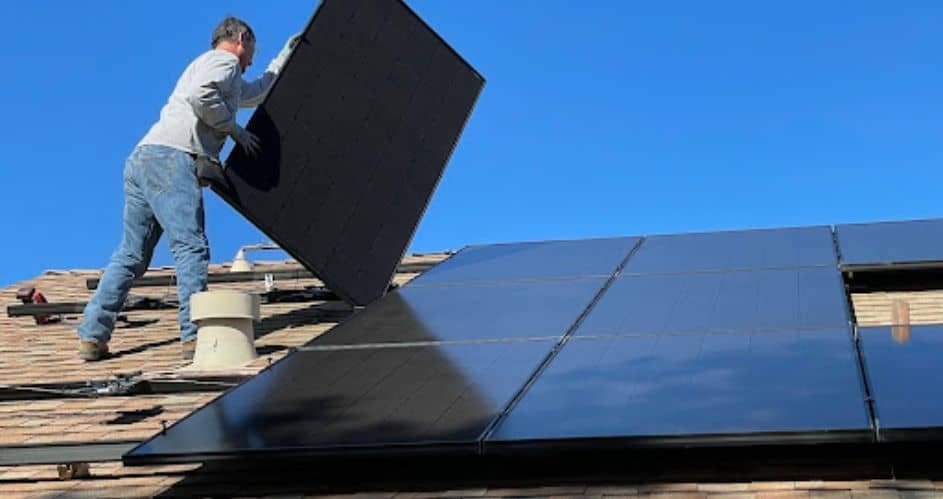
Adelaide offers the ideal climate for solar panel installations, with warm, dry summers, clear skies, and little rainfall. Adelaide has many days that are clear and sunny, which are ideal for solar energy production.
It is time locals took advantage of the fact that southern Australia is one among the driest regions on the driest continent by focusing on the renewable energy that this amazing climate can foster.
If you haven’t yet considered solar panels for your rooftop, what are you waiting for?
What kind of electricity will my solar energy system generate?
The main worry of many consumers is that their photovoltaic panels would not generate enough energy to run their home or business. However, this worry is baseless in most Australian climates.
The fact is, Australia is almost the perfect environment for solar panels, and the technology is only growing, so this is a change that has come to stay.
Of course, a larger installation of solar panels will create more energy than a smaller one, just like a more powerful engine driving a car faster. However, there are other considerations in addition to the system’s scale. The solar power system’s exposure to sunlight, for instance.
How the equipment is installed, as well as factors like whether there are any obstructions, any shadows that obstruct the sun, the quantity of time of daylight there are, how powerful the sun is, and how sunny or foggy the days are, will all affect how much sunshine your system receives.
About a third of the electrical energy is produced by a solar energy system which experiences more gloomy days than sunny ones. Adelaide in Australia is regarded as a photovoltaic hotspot since it experiences far less gray skies than other Australian towns like Hobart.
As an example, in Adelaide you may anticipate receiving roughly 16.8 kilowatt hours of solar energy per day with a 4-kilowatt system, compared to about 14 kilowatt hrs in Hobart.
The inducement to install solar energy equipment
But is it worthwhile to pay the price for using solar panels to generate electricity? Solar panel systems have become more affordable over time, and if you consume a lot of electrical power, they can save you a lot of money.
The amount of cash you can save on average? Think about the fact that energy providers currently charge roughly 26 cents per kilowatt hour for electricity. When you consider that a solar panel’s energy costs between 8 and 10 cents per kilowatt hour, this is pricey.
The energy savings from installing a system like this would pay for it within six years, and whatever electricity you produced after that time would be free.
If you want to look at examples of the cost savings with renewable energy, starting at https://www.mdbsolaradelaide.com.au/ is a good idea for a research point.
Income from solar equipment investment
But installing solar panel systems could bring you additional income in addition to cost savings. In actuality, only around 50–60% of the energy produced by their solar systems will be used by most families and workers.
Therefore, if you were to export 40% of the 5-kilowatt electricity back to the particular grid at the standard rate of approximately 10 cents per kWh, you could anticipate earning a 12% yield on the investment over the course of eight years.
Australia sets goals for using green energy
Australian federal government representatives and officials established objectives early on in the renewable energy sensation, and were hoping that by 2020, at least 33,000 gigawatt hours will come from renewable sources.
Although the Renewable Energy Target (RET) was regrettably reduced from 41,000 gigawatt hours, the amount is still substantial enough to spur investment and new job opportunities in the industry. Click here to learn more about gigawatts, and other units of electrical measure.
Installing a renewable energy source will give you a good start in the production of electricity of the future. As climate change becomes a bigger problem annually, more and more businesses are realizing the necessity of solar panels.
Instead of relying on an overstressed electrical grid during catastrophes and other times of great power demand, solar clients can relax knowing their homes will continue to run as normal, without any worry that grid outages could leave their family in peril.
What are the advantages for ratepayers and the community at large?
Ratepayers will save money annually for a contract period of ten years by reducing their electricity expenditure. The Council is practicing sound financial management by reducing its utility costs, freeing up money to be used for other services offered to residents and ratepayers.
Through this agreement, emissions from Council operations will be reduced by around 50%. The metropolitan area of Adelaide is contributing to the transition to a low-emission state by taking the lead on emissions reduction.
The Council’s dedication to this contract promotes innovation in more environmentally friendly businesses and supports opportunities of the future.
Where solar and other renewable energy businesses used to be scarce, with the growth of technology and climate awareness, renewable energy businesses from beginning to end are popping up everywhere.
What is an electrical purchase agreement or contract for renewable energy?
Virtual Production Agreement (VGA), commonly known as power purchase agreement (https://lawquarter.com.au/short-guide-power-purchase-agreements-ppa-australia/) or PPA, provides power. Large corporations can purchase a certain amount of solar or wind energy straight from the sustainable generator under this form of agreement.
This implies that any additional energy-efficiency projects carried out by Council will keep on reducing the cost of our electricity bills.
What length of time is the energy contract term?
Starting on July 1, 2020, the contract’s renewable component was slated to last for 9.5 years. Longer-term contracts give electricity producers more security and support the growth of renewable energy sources.
What sources of renewable energy will be used to power us?
Solar power makes up around 25% of the city’s power supply, which is derived from a combination of solar and wind energy.